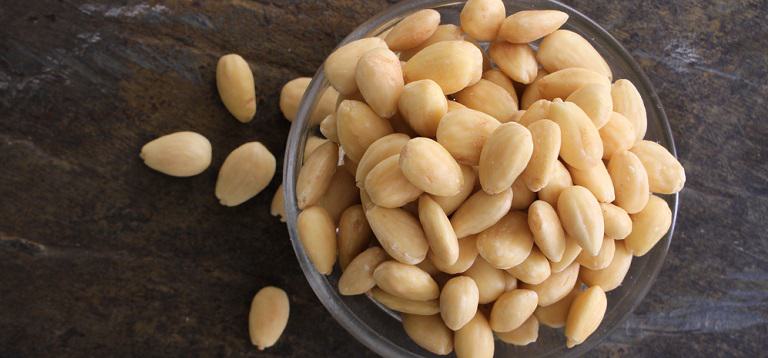


 Blanching an almond isnt a complicated process. To quickly blanch almonds, youll want to place them into boiling water and let them soak for about two minutes. After they have soaked, drain the water and wash the almonds with cold water. This should cause the skin to slide off of the nuts. Once the skin of all of the almonds is fully removed, they are considered blanched.
So, how and when is blanched almond flour used? The fine and smooth texture of blanched almond flour creates treats that are light and fluffy. Because of this, its often the preferred flour type when making desserts like pastries. Additionally, because the almonds are lighter and more uniform, the flour will add a consistent appearance to your dish. While the nutritional benefits of blanched almond flour may differ slightly from unblanched flour, its not by a significant amount.
Blanching an almond isnt a complicated process. To quickly blanch almonds, youll want to place them into boiling water and let them soak for about two minutes. After they have soaked, drain the water and wash the almonds with cold water. This should cause the skin to slide off of the nuts. Once the skin of all of the almonds is fully removed, they are considered blanched.
So, how and when is blanched almond flour used? The fine and smooth texture of blanched almond flour creates treats that are light and fluffy. Because of this, its often the preferred flour type when making desserts like pastries. Additionally, because the almonds are lighter and more uniform, the flour will add a consistent appearance to your dish. While the nutritional benefits of blanched almond flour may differ slightly from unblanched flour, its not by a significant amount.
 Almond flour (no matter the type) is an excellent plant-based flour that can be used in various recipes and cuisines. Cakes, cookies, pasta and pizza crust can all be created with almond flour. Additionally, because almond flour is slightly sweeter and nuttier than most flavors, it will add a boost of flavor to savory dishes. Overflowing with nutrients like healthy fats and low in carbs, its the perfect flour to use when following a ketogenic diet. To begin baking with almond flour, look at our almond flour products, and decide which sounds best to you. Our almond flour is guaranteed to be gluten free, kosher, vegan and paleo.
Almond flour (no matter the type) is an excellent plant-based flour that can be used in various recipes and cuisines. Cakes, cookies, pasta and pizza crust can all be created with almond flour. Additionally, because almond flour is slightly sweeter and nuttier than most flavors, it will add a boost of flavor to savory dishes. Overflowing with nutrients like healthy fats and low in carbs, its the perfect flour to use when following a ketogenic diet. To begin baking with almond flour, look at our almond flour products, and decide which sounds best to you. Our almond flour is guaranteed to be gluten free, kosher, vegan and paleo.
 Both unblanched and blanched almond flour are a healthy choice when searching for grain and gluten free baking flour. And choosing which to buy comes down to your personal health goals and position. When deciding between these two types of almond flour, ask yourself the following questions.
Both unblanched and blanched almond flour are a healthy choice when searching for grain and gluten free baking flour. And choosing which to buy comes down to your personal health goals and position. When deciding between these two types of almond flour, ask yourself the following questions.
 An excellent and low carb way to start your day, these Almond Pancakes are the perfect recipe to make if you're new to cooking with almond flour. Developed with almond flour in mind, it creates a light, fluffy and irresistible pancake that everyone at the table will go crazy for. Pair it with delicious toppings like fresh fruit and maple syrup and enjoy.
An excellent and low carb way to start your day, these Almond Pancakes are the perfect recipe to make if you're new to cooking with almond flour. Developed with almond flour in mind, it creates a light, fluffy and irresistible pancake that everyone at the table will go crazy for. Pair it with delicious toppings like fresh fruit and maple syrup and enjoy.